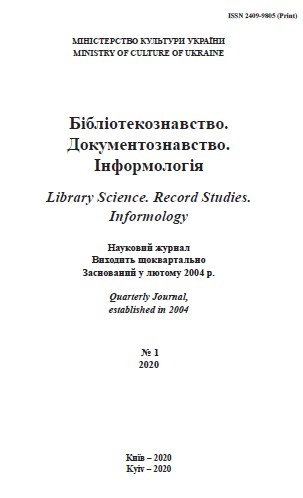РОЗВИТОК МАТЕМАТИЧНИХ ЗАСАД СОЦІАЛЬНИХ КОМУНІКАЦІЙ
DEVELOPMENT OF MATHEMATICAL FUNDAMENTALS OF SOCIAL COMMUNICATIONS
Author(s): Victoria Kopaneva, Leonid Kostenko, Tetyana SymonenkoSubject(s): Theory of Communication, Methodology and research technology
Published by: Національна академія керівних кадрів культури і мистецтв
Keywords: social communications; mathematical models; scale invariance; probability theory; stable distributions; self-organization;
Summary/Abstract: The purpose of the article is to generalize the patterns of phenomena and processes of social communications and to develop on this basis their unified mathematical model. The methodology is a systematic, infometric, and synergetic approaches to the development of mathematical principles of social communication. The first one (systematic) is to generalize the empirical patterns of scaling in librarianship, linguistics, and science. The second one (infometric) is to obtain an analytical description of the quantitative relationship between the subjects and objects of social communications, the thirdone (synergetic) is to create their unified mathematical model. The scientific novelty of the work lies in the development of ideas about the large-scale invariance of phenomena and processes of social communications, which are approximated by the empirical laws of Bradford, Lotka, and Zipf. A comprehensive analysis of these patterns was performed, and it was stated that they differ only in areas of use, and we should raise the question of establishing a unified mathematical model of these patterns. The necessity of using stable laws of distribution of probability theory for the analytical description of the phenomenon of scaling and self-organization of social communication processes was substantiated. It was found that the considered processes are described by a stable distribution law with a characteristic coefficient equal to the constant of the golden section. Conclusions. Bradford’s law of concentration and scattering of information, Zipf’s linguistic-statistical law, and Lotka’s law of distribution of scientists by publishing activity are manifestations of latent relations between subjects and objects of social communication (authors, publications, terminology, etc.). Clarifying these hidden relationships and defining the mathematical apparatus for their accurate description and analysis, as was done in the study, will ensure the development of the scientific base of social communications and the transition from approximation to analytical research in this area.
Journal: Бібліотекознавство. Документознавство. Інформологія
- Issue Year: 2021
- Issue No: 1
- Page Range: 42-49
- Page Count: 8
- Language: Ukrainian

